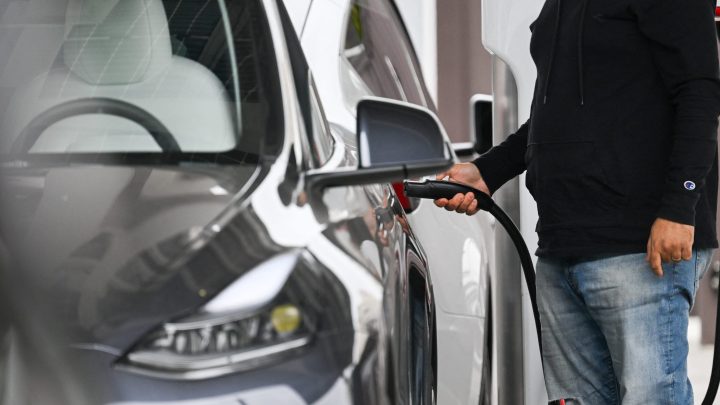
Why some drivers are still hesitant to go electric

The U.S. auto industry has been pretty worried as of late about electric vehicle sales. Cars are still selling — EVs, hybrids and plug-in hybrids made up 18% of new vehicle sales in the U.S. in the first quarter of this year, according to new data shared by the U.S Energy Information Administration this week. But that share was down ever so slightly from the previous quarter. And it’s definitely not where automakers would like it to be.
Both makers of EVs and their potential buyers face a similar conundrum: High upfront costs with delayed financial benefits.
For many carmakers, their huge investments in battery plants and new supply chains, so far, are not paying off, says Gil Tal, director of the Electric Vehicle Research Center at UC Davis.
“Right now on every electric car they’re selling, they are losing, if they just divide the total investment by the number of cars. But if you will divide it by the next 10 or 15 or 20 years of selling electric cars, they will not lose money,” said Tal.
But saying, “Just wait, we’ll make money on this in a decade,” doesn’t look great on a quarterly earnings report.
And consumers also have to make a big upfront investment, says Leah Stokes, an associate professor at UC Santa Barbara.
“I think a lot of people want to own EVs, but that slightly higher sticker price in terms of the upfront ownership costs, buying the car’s a little more expensive. That’s a really big variable,” said Stokes.
Stokes says that’s deterring consumers, even if they’ll save money on gas in the future. And, they’re worried about how far they can drive on a single charge.
“Price, reliability, ease of use, charging, quickness of charging,” these are all hurdles automakers will have to overcome to see more widespread EV adoption, says Brian Moody, senior editor at AutoTrader. But he thinks at some point in the near future, a car company will check all the necessary boxes.
“Once EVs reach cost parity, and then once they’re offered a long range, and we see the availability of chargers, at that point, we’re likely to see mass market adoption,” said Seth Goldstein, an equity strategist with Morningstar.
In other words, once we don’t have to change our lifestyle or budget to drive an EV, we’ll buy more of them.
There’s a lot happening in the world. Through it all, Marketplace is here for you.
You rely on Marketplace to break down the world’s events and tell you how it affects you in a fact-based, approachable way. We rely on your financial support to keep making that possible.
Your donation today powers the independent journalism that you rely on. For just $5/month, you can help sustain Marketplace so we can keep reporting on the things that matter to you.











